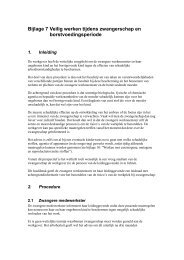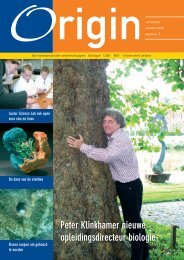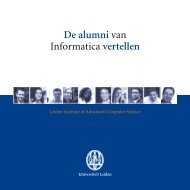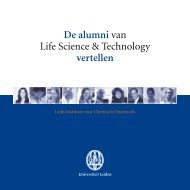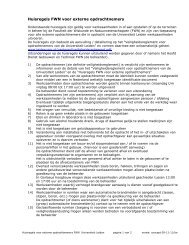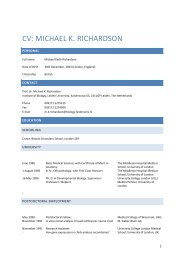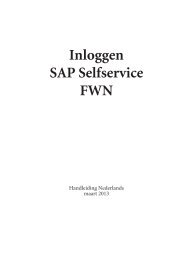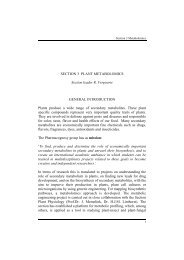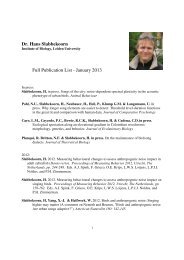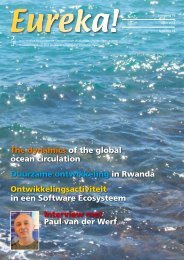infinite Beauty - Faculteit der Wiskunde en Natuurwetenschappen
infinite Beauty - Faculteit der Wiskunde en Natuurwetenschappen
infinite Beauty - Faculteit der Wiskunde en Natuurwetenschappen
Create successful ePaper yourself
Turn your PDF publications into a flip-book with our unique Google optimized e-Paper software.
20<br />
math in nature<br />
origin - universiteit leid<strong>en</strong><br />
Box 2: Johannes Kepler found that the<br />
Fibonacci numbers are related to the gold<strong>en</strong><br />
ratio:<br />
Which means that the more n reaches<br />
infinity, the more the ratio betwe<strong>en</strong> the subsequ<strong>en</strong>t<br />
Fibonacci numbers reaches φ.<br />
Figure 2: The spirals in the middle of a sunflower are arranged<br />
according to the Fibonacci numbers (photo: Uwe H. Friese,<br />
Bremerhav<strong>en</strong> Germany 2005).<br />
They tested the consist<strong>en</strong>cy of the computed results<br />
by comparing them with the opinion of human referees.<br />
The predictions were especially valuable wh<strong>en</strong><br />
applied to forecast the perceived beauty of vertical<br />
proportions of facial features. With this knowledge in<br />
mind the possibility is created to ask your plastic surgeon<br />
to move your facial features to the right places.<br />
But what’s really so gold<strong>en</strong> about this ratio? It might<br />
not explain all beauty. And we might have to take<br />
the all-explaining feature of it with a pinch of salt<br />
(Also see the article “Schoonheid is…” by Carlos de<br />
Lannoy). Finding the gold<strong>en</strong> ratio in nature might<br />
be like gold; there is <strong>en</strong>ough of it to trade or say something<br />
about it, but not that much that the gold<br />
becomes invaluable or that the ratio becomes unimportant.<br />
Sci<strong>en</strong>tific theories might explain some of it<br />
but cannot grasp the complete picture. Like beauty; a<br />
concept is tak<strong>en</strong> and made unspeakable, like the unspeakable<br />
l<strong>en</strong>gth of the <strong>infinite</strong> or transfinite number<br />
of decimals of φ.<br />
Refer<strong>en</strong>ces:<br />
• Livio, M. (2002) The gold<strong>en</strong> ratio and aesthetics.<br />
University of Cambridge Plus Magazine 22. Online<br />
publication, plus.maths.org; accessed May 2011.<br />
• Luo, Z. P. and Hashimoto, H. (2000) High-resolution<br />
Electron Microscopy observation of a new crystalline<br />
approximant W’ of Mg-Zn-Y icosahedral quasicrystal.<br />
Micron 31: 487-492.<br />
• Ol<strong>der</strong>shaw, R. L. (1986) Cosmological self-similarity<br />
and the principle of scale covariance. Astrophysics<br />
and Space Sci<strong>en</strong>ce 128: 449-453.<br />
• Ol<strong>der</strong>shaw, R. L. (2008) Discrete Cosmological Self-<br />
Similarity and Delta Scuti Variable Stars. Electronic<br />
Journal of Theoretical Physics 5 (19): 123-132.<br />
• Gunes, H. and Piccardi, M. Assessing facial beauty<br />
through proportion analysis by image processing.<br />
International Journal of Human-Computer Studies<br />
64:1184-1199.




